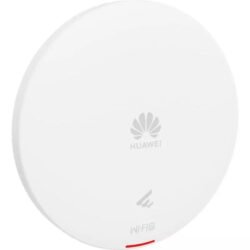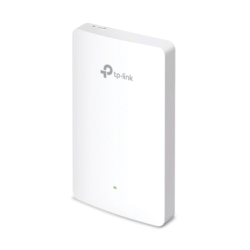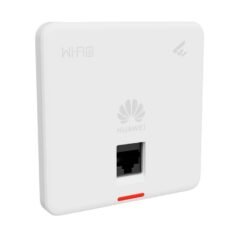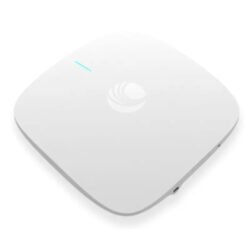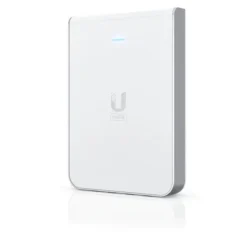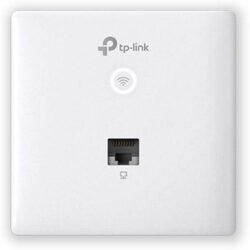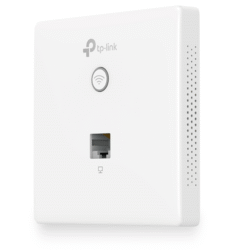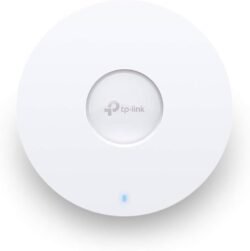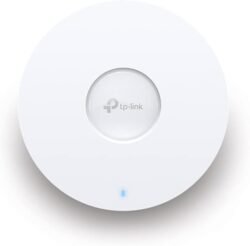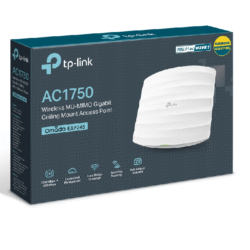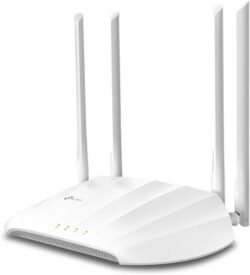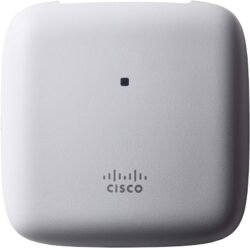Indoor WiFi Access Points in Kenya – Reliable Wireless Networking
We offer the best Indoor WiFi Access Points price in Kenya from trusted brands like Ubiquiti, TP-Link, MikroTik, Grandstream, Tenda, Huawei, D-Link, Cisco, and Cambium. These devices are designed to deliver strong, stable Wi-Fi coverage across homes, offices, schools, and commercial spaces.
WiFi Access Points
Huawei eKitEngine AP361 Wi-Fi 6 Ceiling-Mount Indoor Access Point
WiFi Access Points
WiFi Access Points
WiFi Access Points
WiFi Access Points
WiFi Access Points
TP-Link Omada AC1200 Wireless MU-MIMO Gigabit Wall-Plate Access Point
WiFi Access Points
TP-Link EAP115-Wall 300Mbps Wireless N Wall-Plate Access Point
WiFi Access Points
WiFi Access Points
WiFi Access Points
TP-link EAP245 AC1750 Wireless MU-MIMO Gigabit Ceiling Mount Access Point
WiFi Access Points
WiFi Access Points
WiFi Access Points
WiFi Access Points
An Indoor WiFi Access Point (AP or WAP) provides wireless network connectivity by bridging wireless devices to a wired network. It extends Wi-Fi coverage, manages multiple simultaneous connections, and improves performance in high-density environments. Unlike a router, which also handles routing, firewall, and switching functions, an access point focuses on expanding wireless reach, capacity, and user density within indoor environments such as offices, schools, and residential buildings.What is an Indoor WiFi Access Point?
Indoor WiFi Access Points (APs) function by connecting to a wired network (usually via Ethernet) and broadcasting a wireless signal that devices like smartphones, laptops, tablets, and IoT gadgets can connect to. They act as a bridge between wired and wireless networks, ensuring seamless data flow and stable connectivity in areas where a router’s signal may not reach.How Indoor Access Points Work
Key Components of an Indoor Access Point
- Radio Transceiver – Converts wired data into radio signals and manages both transmitting and receiving of Wi-Fi signals.
- Antenna – Extends and strengthens the wireless signal, improving range and performance.
- Network Interface (Ethernet Port) – Connects the AP to the wired network infrastructure, such as a router or switch.
How They Function
- Wired Connection – The AP connects to a router or switch using an Ethernet cable to receive data and internet access.
- Signal Conversion – Wired data is converted into wireless signals using radio frequencies.
- Wireless Connection – Wi-Fi-enabled devices detect the AP’s broadcasted signal and connect to it.
- Data Flow – The AP routes traffic between wireless devices and the wired network, ensuring smooth communication and internet access.
Key Benefits of Indoor WiFi APs
- Extended Coverage – Expands Wi-Fi into weak-signal or dead-zone areas in buildings.
- Higher Capacity – Handles multiple simultaneous device connections better than a single router.
- Seamless Integration – Works easily with existing network infrastructure like switches and routers.
- Mobility Support – Enables uninterrupted connectivity as users move within the AP’s coverage area.
- Simplified Installation with PoE – Many APs use Power over Ethernet (PoE), allowing both data and power delivery via a single cable.
Key Benefits of Indoor Wireless Access Points
- Extends Wi-Fi coverage – Eliminates dead zones by expanding coverage into weak areas.
- Handles more devices – Optimized to support dozens or even hundreds of simultaneous users.
- Centralized management – Advanced systems use cloud-based controllers for seamless roaming and monitoring.
- Boosts network capacity – Ensures reliable performance in high-density environments like offices, schools, and hotels.
Indoor WiFi Access Points are deployed in residential, educational, commercial, healthcare, and public spaces to extend a wired network’s wireless coverage and provide stable connectivity for multiple devices. Different types of indoor APs are designed for specific environments — from ceiling-mounted units that cover large, open areas to wall-plate APs that deliver dedicated Wi-Fi in guest rooms or smaller spaces.Where Indoor Access Points Are Used
Common Deployment Areas
- Residential Homes
- Purpose: Extend Wi-Fi throughout the house, allowing devices like smartphones, smart TVs, and tablets to connect without extra cabling.
- Applications: Eliminate dead zones in multi-floor houses and power smart home ecosystems.
- Offices & Businesses
- Purpose: Deliver enterprise-grade connectivity across large office floors and multi-story buildings.
- Applications: Ensure employees, VoIP phones, and collaboration tools run seamlessly in reception areas, open-plan spaces, and conference rooms.
- Educational Institutions
- Purpose: Provide robust, high-density Wi-Fi for students and staff in classrooms, libraries, labs, and lecture halls.
- Healthcare Facilities
- Purpose: Enable wireless connectivity for medical staff, hospital equipment, and patient devices in wards and private rooms.
- Hospitality (Hotels & Resorts)
- Purpose: Wall-plate APs are commonly installed in individual guest rooms, lobbies, and conference centers to deliver reliable, high-speed Wi-Fi for guests.
- Public Spaces & Retail
- Purpose: Offer secure Wi-Fi for customers in shopping malls, cafés, restaurants, and other high-traffic areas.
Key Considerations When Choosing Indoor Access Points
- Signal Penetration: Thick walls and structural obstacles may require APs with stronger transmission power.
- Coverage Area & User Density: The number of devices and size of the deployment space determine whether high-capacity APs are needed.
- Installation Type:
- Ceiling-mounted APs suit large areas like offices and auditoriums.
- Wall-plate APs are ideal for smaller spaces like hotel rooms and dormitories.
Indoor WiFi Access Points Price in KenyaThe cost of an indoor access point depends on brand, Wi-Fi technology (Wi-Fi 5, Wi-Fi 6, Wi-Fi 6E), coverage area, and device capacity. At TDK Solutions, you’ll find options to fit every budget and need:
- Ubiquiti UniFi – Enterprise-grade performance with scalable cloud management.
- TP-Link Omada – Cost-effective access points with seamless roaming.
- MikroTik – Flexible APs with advanced RouterOS features.
- Grandstream GWN – Wave-2 and Wi-Fi 6 solutions with advanced QoS.
- Cisco & Huawei – Carrier-grade indoor wireless for large enterprises.
- D-Link & Tenda – Budget-friendly options for small businesses and homes.
- Cambium – High-capacity solutions ideal for educational and enterprise networks.
Indoor vs. Outdoor WiFi Access PointsIndoor WiFi Access Points are ideal for homes, offices, schools, hospitals, and retail spaces, delivering strong and reliable coverage within buildings. However, when Wi-Fi is needed in open or rugged environments, Outdoor WiFi Access Points are the better choice. Outdoor APs are weatherproof and durable, built to withstand rain, dust, and extreme temperatures while providing:
- Extended coverage for large outdoor areas like campuses, warehouses, and stadiums.
- High client capacity to support hundreds of simultaneous connections.
- Rugged enclosures & surge protection for reliable performance in harsh environments.
- PoE support for simple, flexible installation.
Buy Indoor Wi-Fi Access Point today at the best price in Kenya from TDK Solutions — your trusted supplier for Ubiquiti, TP-Link, MikroTik, Grandstream, Tenda, Huawei, Cisco, and Cambium networking solutions. Enjoy fast delivery, expert support, and genuine products tailored to your needs.


